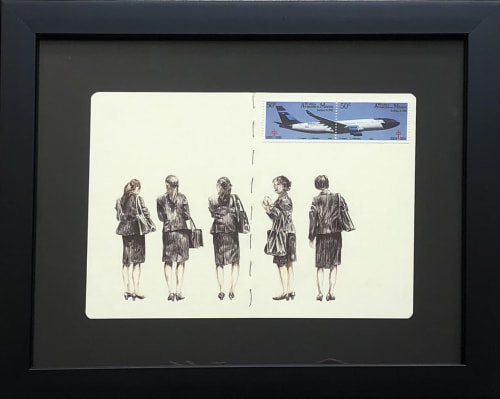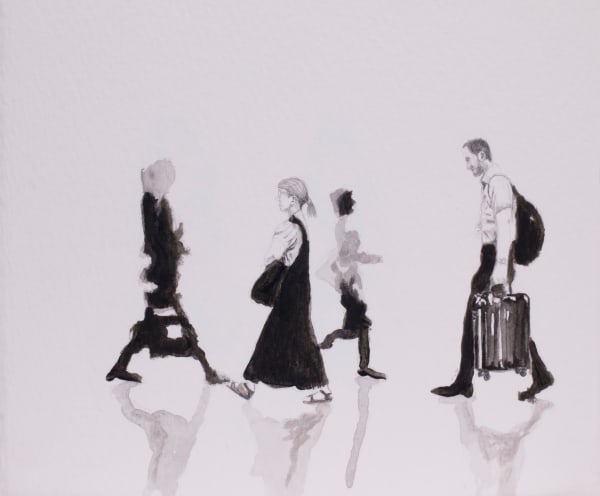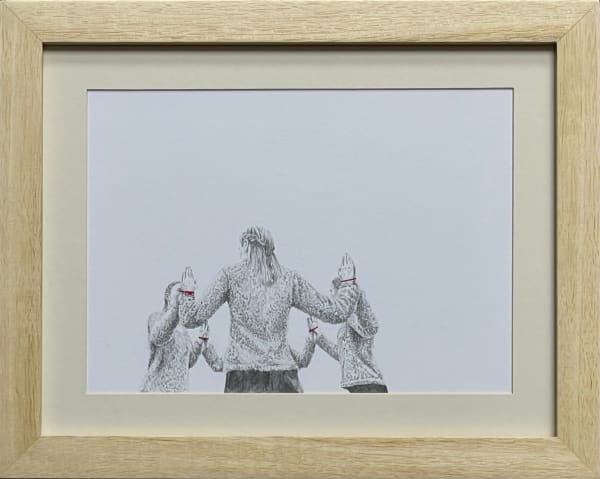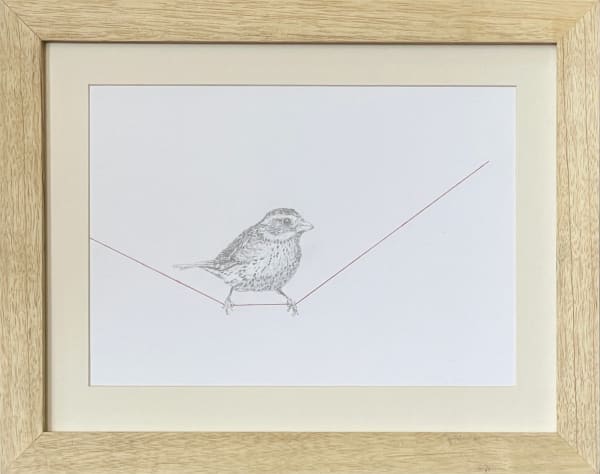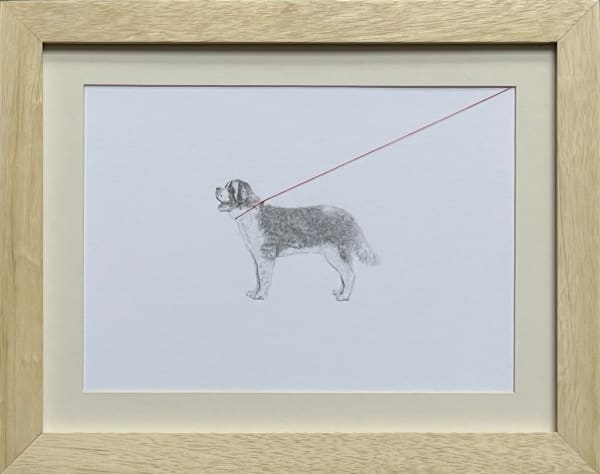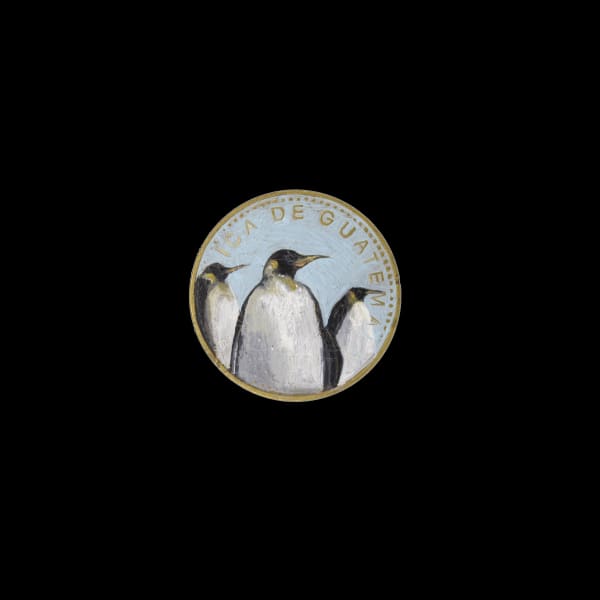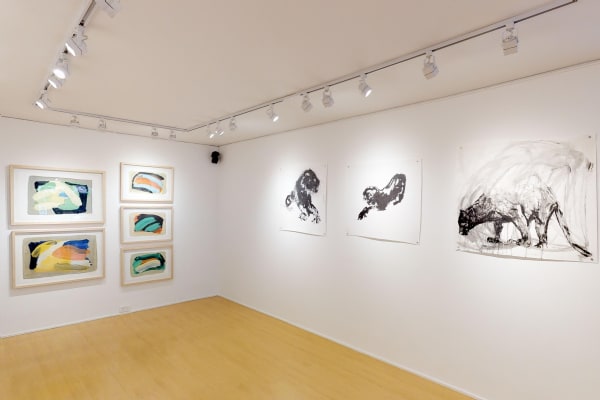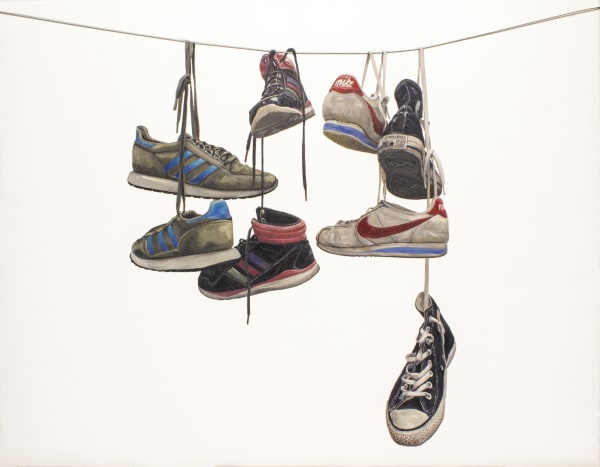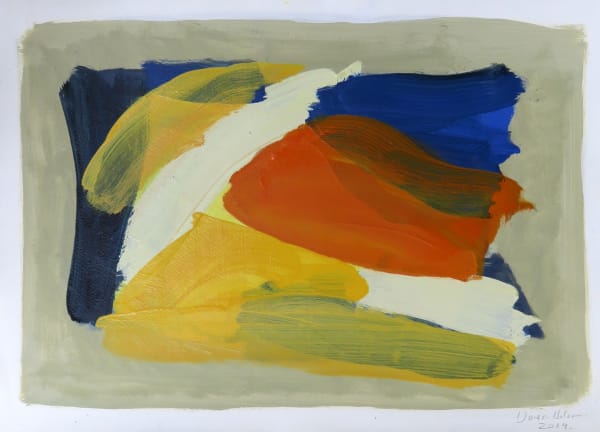By being the result of a mental project brought to fruition through skill, mastery of material, and vision, the work embodies a character and spirit that inevitably moves the observer.
It could be said that Carlos Alarcon's evolution as an artist runs contrary to that of most painters who began by realistically representing the visible world, and have ended up distorting it in favor of expressionist or conceptual aims. In contrast, Alarcon began by producing expressionist paintings laden with socio-political content, and has progressed to creating a type of realistic representation with no obvious or literal message.
The obstinate counter-direction of his work is also manifest in his small drawings which contrast with this era of grand artistic egos. It is also present in his current preference for classicism, as his work has changed from the avant-garde and experimental to a practice that prizes skill, knowledge, craftsmanship and aesthetics.
Moreover, his work allows us to understand that, for the artist, painting and drawing possess the ability to stir admiration by their mere presence. By being the result of a mental project brought to fruition through skill, mastery of material, and vision, the work embodies a character and spirit that inevitably moves the observer. It predisposes a viewer to find arguments that may not have crossed the artist's mind, but which effectively convey any thoughts or emotions prompted from the work itself. Keep in mind that painting possesses a special ability to both demonstrate and poeticize the problems and hopes of human beings.
Fragment of Eduardo Serrano's text, "I don't Draw on Sundays."
-
 Anguishes 8, 2025View more details
Anguishes 8, 2025View more details -
 Caminantes, 2025View more details
Caminantes, 2025View more details -
 Runners, 2025View more details
Runners, 2025View more details -
 Tensions 11 (Hands), 2023View more details
Tensions 11 (Hands), 2023View more details -
 Tensions 12 (Boat), 2023View more details
Tensions 12 (Boat), 2023View more details -
 Tensions 14 (Bird), 2023View more details
Tensions 14 (Bird), 2023View more details -
 Tensions 16 (Penguin), 2024View more details
Tensions 16 (Penguin), 2024View more details -
 Tensions 18 (Elephant Foot Tied), 2024View more details
Tensions 18 (Elephant Foot Tied), 2024View more details -
 Tensions 19 (Elephant Neck Tied), 2024View more details
Tensions 19 (Elephant Neck Tied), 2024View more details -
 Tensions 6 (Saint Bernard), 2024View more details
Tensions 6 (Saint Bernard), 2024View more details -
 Tensions 9 (Pointer), 2024View more details
Tensions 9 (Pointer), 2024View more details -
 Urban Landscape, 2024View more details
Urban Landscape, 2024View more details -
 Waiting, 2025View more details
Waiting, 2025View more details -
 Walker, 2025View more details
Walker, 2025View more details
Carlos Alarcón is a Colombian artist who studied Visual Arts with an emphasis in audiovisual expression at the Pontificia Universidad Javeriana of Bogota. He then earned a post graduate degree in Ephemeral Architecture and Stage Events and Concepts at the Universidad Politécnica de Cataluña in Barcelona, Spain.
Over time his work evolved towards drawing and painting. Initially he created expressionist works and then evolved towards realistic representation with a vocation for classicism. Among his most recognized series are: Par / adoxes, Still Lives, Before Nothing, Mute Anguishes, I Don't Draw on Sundays and Painted Numismatics.
-

Muestra de ‘Grandes obras y pequeños formatos’ y otras breves de cultura
Redaccion, El Nuevo Siglo, December 1, 2020 -

“Navegando espacios”, la esencia del arte colombiano en Artbo fin de semana
Redaccion Cultura, El Nuevo Siglo, July 28, 2020 -

“Navegando espacios”, mirada a la figura humana desde el arte
Redacción Cultura, El Nuevo Siglo, July 15, 2020 -

An Ode to Paper’s Many Possibilities at Beatriz Esguerra Art in Bogotá, Colombia
The editors of ARTnews, ARTnews, July 30, 2019 -

El artista Carlos Alarcón presenta su exposición ‘Prueba y error’
Juan Carlos Rojas, El Tiempo, October 17, 2017
-
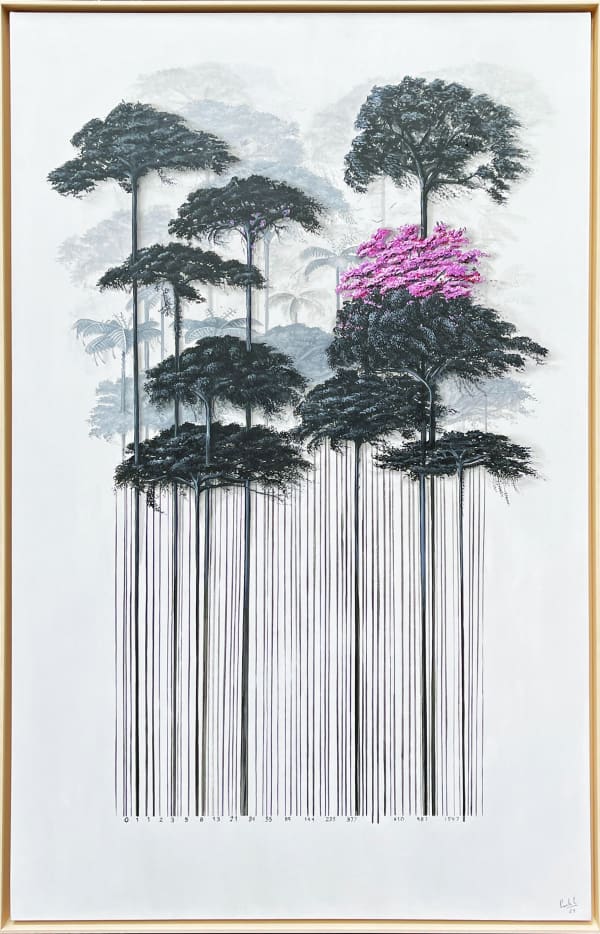
ARTBO 2024
25 - 29 Sep 2024Nature’s Codes Exploring Boundaries, Balance, and Inner Worlds Beatriz Esguerra Art proudly presents at ARTBO 2024 the works of six renowned Colombian artists who explore...Read more -

Art Palm Beach 2024
25 - 28 Jan 2024INTROSPECTIVE LANDSCAPES BEA's Colombian Artists Redefine Landscape at Art Palm Beach 2024 Embark on a journey where art transcends the ordinary as Beatriz Esguerra Art...Read more -
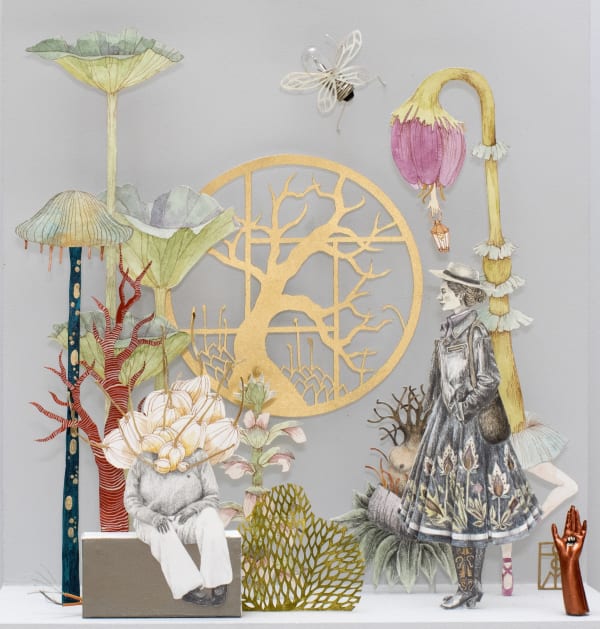
Dallas Art Fair 2023
20 - 23 Apr 2023BEYOND PAPER Colombian artists redefining paper. For decades Colombian artists have been redefining what art on paper is and can be. Next to traditional drawing...Read more -

Los Angeles Art Fair 2023
15 - 19 Feb 2023BEYOND PAPER Colombian artists redefining paper. For decades Colombian artists have been redefining what art on paper is and can be. Next to traditional drawing...Read more -
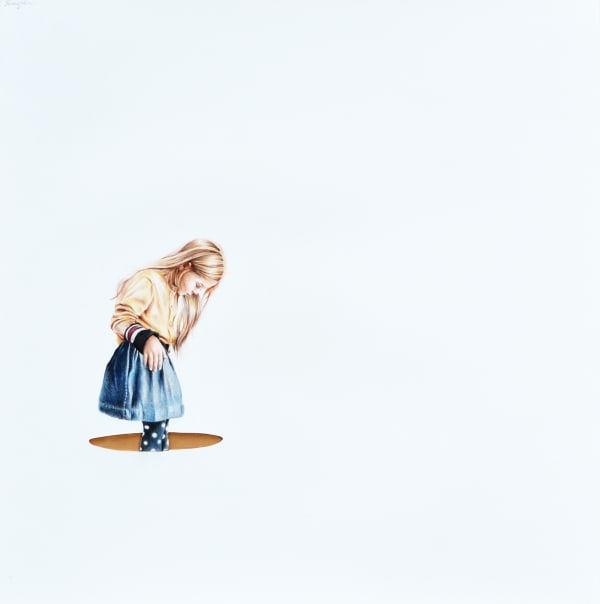
Dallas Art Fair 2021
11 - 14 Nov 2021FIGURE AND SPACE The allure of silent spaces, and figures that interact within them. “Figure and Space” brings together the work of seven Colombian artists...Read more -

Art on Paper 2021
"Figure and Space" 9 - 12 Sep 2021The allure of silent spaces, and figures that interact within them. Figure and Space brings together the work of six Colombian artists whose expressions, although...Read more -

Artbo 2019
19 - 22 Sep 2019DRAWING & PAINTING Featuring works by Pablo Arrázola, Armando Castro, Teresa Currea, Ismael Rivera, Juan Carlos Rivero-Cintra, and Pedro Ruiz. TAKE A VIRTUAL 3D TOUR...Read more
-

Subtlety and Silence
A Gallery Group Show 11 Jun - 28 Jul 2024SUBTLETY AND SILENCE In the calm of subtlety and the eloquence of silence, ten remarkable artists come together to create a powerful dialogue at Beatriz Esguerra Art. This group show,...Read more -

Still Lives
Recent works by Carlos Alarcón 21 Oct - 30 Nov 2023This exhibition is a personal tribute to still lives as a genre of enduring expression, as a remembrance of the finite, of the beauty we possess but cannot contain, of life in all its forms and patterns, of the volatile relationship with the surroundings and the created objects.Read more
Es una especie de homenaje personal a las naturalezas muertas como un género de expresión permanente, en esa remembranza de lo finito, de la belleza que poseemos pero que no podemos contener, de la vida en todas sus formas y patrones, de la relación volátil con lo circundante y los objetos creados. -

We Are Blue
Group Show 28 Jan - 24 Feb 2023WE ARE BLUE Group Show Works by Carlos Alarcón, Angélica Chavarro, Carolina Convers, Luis Luna, Catalina Prado, Ismael Rivera, Pedro Ruiz, and Jerónimo Villa. Blue is a polysemic color: it...Read more -

Painted Numismatics
Miniature paintings by Carlos Alarcon 23 Oct - 20 Nov 2021PAINTED NUMISMATICS Painted Numismatics is a series of paintings I started in 2019, induced by the contemplation of one of my collections. One of the many things I've collected since...Read more -
Great Works, Small Scale
A Gallery Group Show 28 Nov 2020 - 15 Jan 2021The year 2020 was one of difficulties, challenges and teachings. We had to adapt to a new reality that positively taught us to view life from a different perspective. At...Read more -
Navigating Space
Works by Pablo Arrazola, Mario Arroyave, Carlos Alarcon and Armando Castro. 8 Jul - 9 Aug 2020The human figure is one of those timeless topics that have been consistently explored throughout art history. 'Navigating Space ' is a group show that compiles the work of four...Read more -

New Arrivals
Works by Luis Alejandro Saiz, Carolina Convers, Pablo Arrazola, Mario Arroyave, Teresa Currea, Pedro Ruiz, Danilo Rojas and Ismael Rivera 8 - 28 Feb 2020This new year brings a refreshing wave of artists and works to our gallery. Beatriz Esguerra Art is pleased to present a group show that will open this Saturday, 8th...Read more -

About Paper
A Gallery Group Show 27 Jul - 22 Aug 2019Paper is a multifaceted element, rich in possibilities. This exhibition seeks to explore the role paper plays in works of art, as well as the wide variety that exists within...Read more

